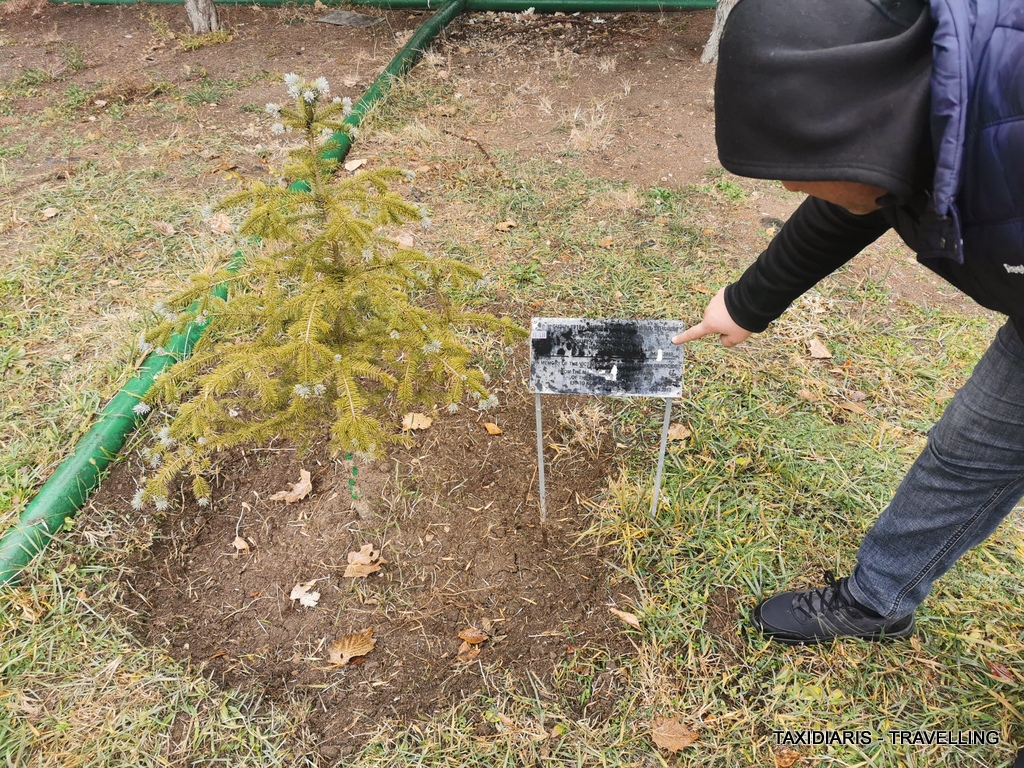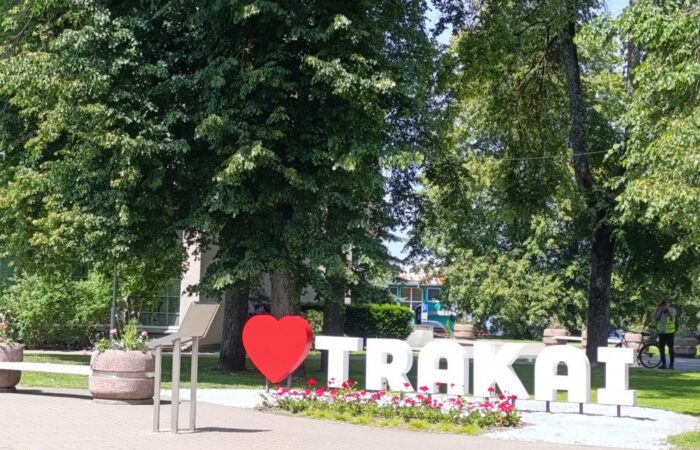Μνημείο Γενοκτονίας, Ερεβάν Αρμενία
The Armenian Genocide Monument, “Tsitsernakaberd,” which translates to “Swallow’s Fortress,” was constructed in 1965 to commemorate the 50th anniversary of the Armenian Genocide.
Το Μνημείο της Γενοκτονίας των Αρμενίων, «Τζιτζερναγκαπέρτ», που μεταφράζεται σε «Φρούριο του Χελιδονιού», κατασκευάστηκε το 1965 για να τιμήσει την 50ή επέτειο της Γενοκτονίας των Αρμενίων. The Armenian Genocide, which was perpetrated by Ottoman Turkey, took place in 1915. Approximately 1.5 million Armenians were exterminated on their homeland. The goal was not only to exterminate Armenians, but to wipe Armenia off the map, leaving no trace of Armenian history behind.
The Armenian Genocide, which was perpetrated by Ottoman Turkey, took place in 1915. Approximately 1.5 million Armenians were exterminated on their homeland. The goal was not only to exterminate Armenians, but to wipe Armenia off the map, leaving no trace of Armenian history behind.
Η γενοκτονία των Αρμενίων, την οποία διέπραξε η Οθωμανική Τουρκία, έγινε το 1915. Περίπου 1,5 εκατομμύριο Αρμένιοι εξοντώθηκαν στην πατρίδα τους. Ο στόχος δεν ήταν μόνο να εξοντωθούν οι Αρμένιοι, αλλά να εξαλειφθεί η Αρμενία από τον χάρτη, χωρίς να αφήσει κανένα ίχνος της αρμενικής ιστορίας πίσω. Is Armenia’s official memorial dedicated to the victims of the Armenian genocide. Memorials serve as poignant reminders of those who have passed away or endured immense pain and hardships.
Is Armenia’s official memorial dedicated to the victims of the Armenian genocide. Memorials serve as poignant reminders of those who have passed away or endured immense pain and hardships.
Είναι το επίσημο μνημείο της Αρμενίας, αφιερωμένο στα θύματα της γενοκτονίας. Τα μνημεία χρησιμεύουν ως οδυνηρές υπενθυμίσεις εκείνων που έχουν πεθάνει ή έχουν υπομείνει τεράστιο πόνο και κακουχίες. Built on the hill of Tsitsernakaberd in 1967, the Genocide Monument has since become an integral part of Yerevan’s architecture and a pilgrimage site.
Built on the hill of Tsitsernakaberd in 1967, the Genocide Monument has since become an integral part of Yerevan’s architecture and a pilgrimage site.
Every year on 24 April, the Armenian Genocide Remembrance Day, thousands of Armenians gather at the memorial to commemorate the victims of the genocide.
Το Μνημείο της Γενοκτονίας στο λόφο του Τζιτζερναγκαπέρτ ολοκληρώθηκε το 1967 και από τότε, έγινε αναπόσπαστο μέρος της αρχιτεκτονικής του Ερεβάν και τόπος προσκυνήματος. Κάθε χρόνο στις 24 Απριλίου, την Ημέρα Μνήμης της Γενοκτονίας των Αρμενίων, χιλιάδες κόσμου συγκεντρώνεται στο μνημείο για τη μνήμη των θυμάτων της γενοκτονίας. The 44-meter stele symbolizes the national rebirth of Armenians. Twelve slabs are positioned in a circle, representing the twelve lost provinces in present-day Turkey. In the center of the circle, at a depth of 1.5 meters, there is an eternal flame dedicated to the 1.5 million people killed during the Armenian genocide.
The 44-meter stele symbolizes the national rebirth of Armenians. Twelve slabs are positioned in a circle, representing the twelve lost provinces in present-day Turkey. In the center of the circle, at a depth of 1.5 meters, there is an eternal flame dedicated to the 1.5 million people killed during the Armenian genocide.
Η στήλη των 44 μέτρων συμβολίζει την εθνική αναγέννηση των Αρμενίων. Δώδεκα πλάκες είναι τοποθετημένες σε κύκλο, αντιπροσωπεύοντας τις δώδεκα χαμένες επαρχίες στη σημερινή Τουρκία. Στο κέντρο του κύκλου, σε βάθος 1,5 μέτρου, υπάρχει μια αιώνια φλόγα αφιερωμένη στο 1,5 εκατομμύριο ανθρώπους που σκοτώθηκαν κατά τη διάρκεια της γενοκτονίας. Along the park at the memorial there is a 100-meter wall with the names of towns and villages where massacres and deportations are known to have taken place. On the rear side of the commemoration wall, plates have been attached to honour the people who committed themselves to relieving the distress of the survivors during and after the genocide.
Along the park at the memorial there is a 100-meter wall with the names of towns and villages where massacres and deportations are known to have taken place. On the rear side of the commemoration wall, plates have been attached to honour the people who committed themselves to relieving the distress of the survivors during and after the genocide.
Κατά μήκος του πάρκου στο μνημείο υπάρχει ένας τοίχος 100 μέτρων με ονόματα πόλεων και χωριών, όπου είναι γνωστό ότι έγιναν σφαγές και εκτοπίσεις. Στην πίσω πλευρά του αναμνηστικού τοίχου, έχουν τοποθετηθεί πινακίδες για να τιμήσουν τους ανθρώπους που δεσμεύτηκαν να ανακουφίσουν την αγωνία των επιζώντων κατά τη διάρκεια και μετά τη γενοκτονία.  The Memory/Fir Ally was founded in 1997 becoming an integral part of the Armenian Genocide Memorial Complex. Row of memorial trees planted by foreign dignitaries.
The Memory/Fir Ally was founded in 1997 becoming an integral part of the Armenian Genocide Memorial Complex. Row of memorial trees planted by foreign dignitaries.
Το άλσος μνήμης από έλατα έγινε το 1997 και από τότε έγινε αναπόσπαστο μέρος του Μνημείου της Γενοκτονίας των Αρμενίων. Σειρά από αναμνηστικά δέντρα που φυτεύτηκαν από ξένους αξιωματούχους. Presidents of many countries, religious leaders, parliament speakers, spokesmen, members of parliaments, governments and international organizations, world-renowned scientists, cultural figures, philanthropists who visited the Armenian Genocide Memorial Complex, also planted firs, fixing their attitude towards to the memory of the Armenian Genocide victims.
Presidents of many countries, religious leaders, parliament speakers, spokesmen, members of parliaments, governments and international organizations, world-renowned scientists, cultural figures, philanthropists who visited the Armenian Genocide Memorial Complex, also planted firs, fixing their attitude towards to the memory of the Armenian Genocide victims.
Πρόεδροι πολλών χωρών, θρησκευτικοί ηγέτες, πρόεδροι κοινοβουλίων, εκπρόσωποι, μέλη κοινοβουλίων, κυβερνήσεων και διεθνών οργανισμών, παγκοσμίου φήμης επιστήμονες, πολιτιστικές προσωπικότητες, φιλάνθρωποι που επισκέφθηκαν το Μνημείο της Γενοκτονίας των Αρμενίων, φύτεψαν επίσης έλατα, καθορίζοντας τη στάση τους απέναντι στη μνήμη των θυμάτων της γενοκτονίας των Αρμενίων.  An alley of trees has been planted to commemorate the genocide victims. The fir-tree is considered to be the tree of eternity, so it’s not accidental that it was decided to establish a memorial ally.
An alley of trees has been planted to commemorate the genocide victims. The fir-tree is considered to be the tree of eternity, so it’s not accidental that it was decided to establish a memorial ally.
Ένα δρομάκι με δέντρα έχει φυτευτεί για τη μνήμη των θυμάτων της γενοκτονίας. Το έλατο θεωρείται το δέντρο της αιωνιότητας, επομένως δεν είναι τυχαίο ότι αποφασίστηκε να καθιερωθεί ένας μνημονιακός σύμμαχος από έλατα.  The people who gather in Tsiternakaberd lay flowers out of respect for all the people who died in the Armenian genocide.
The people who gather in Tsiternakaberd lay flowers out of respect for all the people who died in the Armenian genocide.
Οι άνθρωποι που συγκεντρώνονται στο Τζιτζερναγκαπέρτ, βάζουν λουλούδια σε ένδειξη τιμής για όλους τους ανθρώπους που χάθηκαν στη γενοκτονία.  In this Holocaust Memorial, we have a chance to reflect on how fragile and vulnerable freedom is, pledge not to take our freedoms for granted, and consider what we can do to strengthen freedoms and democracy around the world.
In this Holocaust Memorial, we have a chance to reflect on how fragile and vulnerable freedom is, pledge not to take our freedoms for granted, and consider what we can do to strengthen freedoms and democracy around the world.
Σ’ αυτό το Μνημείο τού Ολοκαυτώματος, έχουμε την ευκαιρία να αναλογιστούμε πόσο εύθραυστη και ευάλωτη είναι η ελευθερία, να δεσμευτούμε ότι δεν θα θεωρούμε δεδομένες τις ελευθερίες μας και να σκεφτούμε τι μπορούμε να κάνουμε για να ενισχύσουμε τις ελευθερίες και τη δημοκρατία σε όλο τον κόσμο.  Ideally, visiting places such as the Auschwitz concentration and extermination camps in Poland, and the Armenian Genocide Museum in Yerevan, is just the first step toward feeling greater empathy toward our fellow humans and the world, says Popi Nicolaides.
Ideally, visiting places such as the Auschwitz concentration and extermination camps in Poland, and the Armenian Genocide Museum in Yerevan, is just the first step toward feeling greater empathy toward our fellow humans and the world, says Popi Nicolaides.
Στην ιδανική περίπτωση, η επίσκεψη σε μέρη όπως το στρατόπεδο συγκέντρωσης και εκτέλεσης στο Άουσβιτς στην Πολωνία και στο Μνημείο Γενοκτονίας στο Ερεβάν, είναι μόνο το πρώτο βήμα για να αισθανθούμε μεγαλύτερη ενσυναίσθηση προς τους συνανθρώπους και τον κόσμο μας, λέει η Πόπη Νικολαΐδου.  It is a humbling experience that suddenly, the inconveniences of our daily life pale in comparison to the gut-wrenching and squalid conditions faced by innocent citizens.
It is a humbling experience that suddenly, the inconveniences of our daily life pale in comparison to the gut-wrenching and squalid conditions faced by innocent citizens.
Είναι μια ταπεινή εμπειρία, που ξαφνικά, οι ταλαιπωρίες της καθημερινότητάς μας, ωχριούν σε σύγκριση με τις τρομακτικές και άθλιες συνθήκες που αντιμετωπίζουν αθώοι πολίτες. Our tour leader, Konstantin Gevorgyan says: “The Genocide Memorial in Yerevan means different things to different people. It is a living monument, a place of reflection and a symbol of memory. For me, though, it is a place of pain and suffering for our grandparents who perished so violently and needlessly. But more importantly, it is a place of example and hope for the future, that something so tragic will never happen again.”
Our tour leader, Konstantin Gevorgyan says: “The Genocide Memorial in Yerevan means different things to different people. It is a living monument, a place of reflection and a symbol of memory. For me, though, it is a place of pain and suffering for our grandparents who perished so violently and needlessly. But more importantly, it is a place of example and hope for the future, that something so tragic will never happen again.”




